Use Unicode Utf-8 For Worldwide Language Support
In this digital age, where communication and interaction take place on a global scale, ensuring worldwide language support has become an essential requirement. With the rise of globalization, businesses, organizations, and individuals now need to effectively communicate across borders, cultures, and languages. This is where Unicode UTF-8 comes into play as the go-to encoding standard for worldwide language support. In this article, we will delve into the benefits of using Unicode UTF-8 and explore how it enables seamless communication across diverse languages.
1. Universal Character Set: Exploring the Basics
Unicode is a computing industry standard that provides a unique code point for every character, regardless of the platform, language, or device. It aims to create a universal character set that encompasses all writing systems and symbols used worldwide. UTF-8, which stands for Unicode Transformation Format 8-bit, is a variable-length encoding scheme that supports the entire Unicode character set. By using UTF-8, developers can represent any character they need, ensuring comprehensive language support.
2. Compatibility and Interoperability: Facilitating Seamless Communication
One of the key advantages of UTF-8 is its compatibility and interoperability across different platforms, operating systems, and programming languages. It allows users to create and share text files across various devices without encountering encoding issues. This enhanced level of compatibility ensures smooth communication regardless of the system being used, making it the ideal choice for international collaboration.
3. Multilingual Support: Enabling Representation of Diverse Scripts
With UTF-8, developers can easily support multiple languages and scripts within a single application or website. This enables users to input, display, and process text in different writing systems, whether it be Latin, Cyrillic, Arabic, Chinese, or any other script. The ability to seamlessly handle diverse scripts is crucial for ensuring inclusivity and accessibility on a global scale.
4. Extended Character Range: Embracing Linguistic Diversity
Unlike other encoding standards, UTF-8 offers an extended character range that covers a vast array of characters from various languages and symbols used globally. It includes characters outside the ASCII range, allowing for the representation of less common scripts. This comprehensive coverage ensures that all individuals, regardless of their language or script, can communicate and express themselves effectively in digital environments.
5. Efficient Encoding: Balancing Storage and Transmission Requirements
Efficient encoding is a crucial aspect of language support. UTF-8 provides a balance between storage efficiency and transmission requirements. It uses a variable-length encoding scheme, where common characters occupy fewer bytes, optimizing storage space. Additionally, its backwards-compatibility with ASCII allows for a seamless transition from existing systems that use ASCII encoding.
6. Simplified Localization: Streamlining Software Development
Localization is the process of adapting software or content to a specific locale or language. Unicode UTF-8 simplifies this process by providing a consistent encoding standard across platforms and languages. By adopting UTF-8, developers can avoid the complexities of dealing with different encodings for various languages, reducing development time and efforts required for localization.
7. Text Searching and Sorting: Enhancing User Experience
Unicode UTF-8 enables efficient text searching and sorting algorithms, enhancing user experience across applications and websites. With UTF-8, users can search for text in multiple languages, ensuring comprehensive search functionality. Sorting algorithms can also correctly order text with diverse scripts, allowing for better organization and presentation of content.
8. Future-proofing Language Support: Unicode UTF-8 as the Go-To Encoding Standard
As the demand for international communication and collaboration continues to grow, Unicode UTF-8 stands as the future-proof option for language support. Its universal character set, compatibility, and support for diverse scripts make it the go-to encoding standard for developers and businesses worldwide. By adopting UTF-8, organizations ensure their systems can support any language now and in the future.
Enable UTF-8 Windows 10, Codepage UTF-8, Locale Emulator, Change code page cmd, Language for non-Unicode programs, Windows Unicode
FAQs:
1. How do I enable UTF-8 support in Windows 10?
To enable UTF-8 support in Windows 10, you can go to the Control Panel, select “Clock and Region,” then “Region,” and under the “Administrative” tab, click on “Change system locale.” From there, you can select the preferred language that supports UTF-8 encoding.
2. What is Codepage UTF-8?
Codepage UTF-8 refers to the code page used for storing and representing text in UTF-8 encoding. It allows for the representation of characters from various scripts and languages in a single encoding scheme.
3. How can I use Locale Emulator to support UTF-8 encoding?
Locale Emulator is a tool that allows users to run applications in different locales, including UTF-8 encoding. By running your application through Locale Emulator, you can ensure proper representation of UTF-8 encoded text.
4. How can I change the code page in Command Prompt (cmd)?
To change the code page in Command Prompt, you can use the “chcp” command followed by the code page number. For example, “chcp 65001” sets the code page to UTF-8.
5. What is “Language for non-Unicode programs” in Windows settings?
The “Language for non-Unicode programs” setting in Windows allows you to specify the encoding used for non-Unicode applications. By selecting the appropriate language, you can ensure proper display and handling of non-Unicode programs in that language.
6. Why should I use Unicode UTF-8 for worldwide language support on Windows?
Using Unicode UTF-8 ensures comprehensive language support on Windows by allowing users to input, display, and process text in different languages and scripts. It provides compatibility, efficiency, and extended character range, making it the ideal choice for international communication and collaboration.
Windows : What Does \”Beta: Use Unicode Utf-8 For Worldwide Language Support\” Actually Do?
Keywords searched by users: use unicode utf-8 for worldwide language support Enable UTF-8 Windows 10, Codepage UTF-8, Locale Emulator, Change code page cmd, Language for non Unicode programs, Windows Unicode
Categories: Top 10 Use Unicode Utf-8 For Worldwide Language Support
See more here: nhanvietluanvan.com
Enable Utf-8 Windows 10
In today’s interconnected world, where communication knows no boundaries, the ability to display and process characters from different languages and writing systems is of paramount importance. Universal Coded Character Set Transformation Format 8 (UTF-8) has emerged as the dominant character encoding standard due to its wide-ranging compatibility. However, Windows 10 initially defaulted to the less versatile Latin-1 encoding, limiting users’ ability to work with non-Latin scripts. In this article, we will explore how to enable UTF-8 on Windows 10, unlock its full potential, and answer some frequently asked questions regarding this topic.
Understanding Character Encoding and UTF-8
——————————————
Character encoding is the systematic method through which characters are represented in a computer system. Different languages and writing systems utilize distinct character sets, and encoding enables machines to interpret these characters correctly. UTF-8, the most widely used Unicode encoding, augments the traditional ASCII encoding to incorporate characters from virtually all writing systems. As a variable-length encoding, it can represent any character in the Unicode standard while efficiently using storage space.
Enabling UTF-8 on Windows 10
—————————-
By default, Windows 10 utilizes the legacy character encoding system, Latin-1, which poses limitations when attempting to display or process characters beyond the ASCII range. However, users can enable UTF-8 functionality through a simple process:
1. Open the Windows Registry Editor by typing “regedit” into the Start Menu search bar and selecting the corresponding program.
2. Navigate to the following registry key path: “Computer\HKEY_LOCAL_MACHINE\System\CurrentControlSet\Control\Nls\CodePage”
3. Right-click on the “CodePage” directory and select “New” → “DWORD (32-bit) Value”.
4. Name the new value “UTF-8” (without quotation marks).
5. Double-click on the “UTF-8” value and enter “1” in the “Value data” field to enable UTF-8 support.
6. Click “OK” and restart your computer for the changes to take effect.
Once you have enabled UTF-8, Windows 10 will possess enhanced compatibility, allowing you to interact seamlessly with various scripts and languages.
The Benefits of Enabling UTF-8
—————————–
Enabling UTF-8 on Windows 10 opens up a world of possibilities for users who frequently encounter non-Latin scripts. Some notable benefits include:
1. Enhanced Language Support: UTF-8 enables Windows 10 to accurately display, process, and input characters from an array of languages, including Chinese, Arabic, Japanese, Russian, and many others. This functionality is particularly advantageous for individuals working in multilingual environments or communicating with international contacts.
2. Web Compatibility: Websites and web-based applications increasingly rely on UTF-8 encoding to ensure smooth interactions across languages. Enabling UTF-8 on Windows 10 guarantees that websites accurately display characters in their respective languages, preventing rendering issues, misinterpretations, and garbled text.
3. File Compatibility: UTF-8 compatibility extends beyond web-based scenarios. Enabling this encoding ensures that files and documents, whether created on Windows 10 or shared from other platforms, are universally compatible and can be correctly displayed or edited.
UTF-8 Windows 10 FAQs
———————
Q1. Is enabling UTF-8 on Windows 10 safe?
A1. Yes, enabling UTF-8 on Windows 10 is safe. It won’t cause any harm to your computer or negatively impact its performance.
Q2. Do I need to restart my computer after enabling UTF-8?
A2. Yes, a system restart is necessary for the changes to take effect. Save your work, close open applications, and choose the “Restart” option to ensure proper implementation.
Q3. What happens if I disable UTF-8 on Windows 10?
A3. Disabling UTF-8 would revert Windows 10 to its default character encoding, Latin-1. This may restrict your ability to display or process characters from non-Latin scripts correctly.
Q4. Can UTF-8 encoding impact file size or performance?
A4. UTF-8 is generally efficient and consumes minimal space, as it only uses more memory when encoding non-ASCII characters. Performance impact is negligible unless working with exceptionally large or complex files.
Q5. Can I enable UTF-8 support on older versions of Windows?
A5. The specific steps outlined in this article may vary for earlier versions of Windows. It is advisable to consult Microsoft’s official documentation or seek specialized guides for individual operating systems.
Unlocking the Power of UTF-8 on Windows 10
——————————————
Enabling UTF-8 support in Windows 10 is a vital step towards embracing global diversity and facilitating effective cross-language communication. By following the mentioned steps and allowing UTF-8 to become the default character encoding on your Windows 10 system, you will gain access to a world of languages, scripts, and cultures, enabling seamless interactions throughout the digital realm.
Codepage Utf-8
In the realm of computer science and programming, character encoding is an essential aspect that ensures compatibility and seamless communication between different systems and platforms. Codepage UTF-8, with its ability to encode characters from virtually all world languages, has emerged as one of the most versatile and widely adopted character encodings. In this article, we will delve into the depths of Codepage UTF-8, exploring its intricacies, advantages, and common FAQs.
Understanding Codepage UTF-8:
Codepage UTF-8, also known simply as UTF-8 (Unicode Transformation Format – 8-bit), is an encoding scheme that maps characters from the vast Unicode character set to a series of bytes. With Unicode being a global standard that encompasses characters from various writing systems, languages, and cultures, UTF-8 can represent any character in the Unicode standard, making it an ideal choice for multilingual computing.
Unlike earlier character encodings that supported only a limited set of characters, UTF-8 employs a variable-length encoding format. This means that each character is represented using one to four bytes, depending on the character’s codepoint in the Unicode standard. By allowing variable-length encoding, UTF-8 strikes a balance between backward compatibility and efficient representation, resulting in widespread adoption across platforms and systems.
Advantages of Codepage UTF-8:
1. Universal Coverage: One of the primary advantages of UTF-8 is its ability to handle characters from all world languages. As a result, it supports cross-platform compatibility, enabling developers to create applications that seamlessly communicate in different languages.
2. Backward Compatibility: UTF-8 is designed to be backward compatible with ASCII (American Standard Code for Information Interchange), which is a widely used character encoding for the English language. As a result, UTF-8 can represent ASCII characters using a single byte, ensuring compatibility with systems not yet supporting Unicode.
3. Compact Representation: By using variable-length encoding, UTF-8 aims to minimize the space required to represent characters. This comes particularly handy in scenarios where storage or bandwidth constraints are factors to consider.
4. Localization-Friendly: UTF-8 facilitates localization efforts by enabling developers to handle diverse languages and writing systems effectively. It allows the representation of characters crucial for accurate display and interpretation of text across different cultures and contexts.
Frequently Asked Questions (FAQs):
Q1. How does UTF-8 handle ASCII characters?
A1. UTF-8 represents ASCII characters (Unicode codepoints 0 to 127) using a single byte, making it fully compatible with ASCII. This means that existing ASCII text can be seamlessly upgraded to UTF-8 without any loss or corruption.
Q2. Are UTF-8 encoded files larger than traditional ASCII or Unicode files?
A2. In general, UTF-8 encoded files have a slightly larger size compared to ASCII-encoded files. However, the difference is negligible. Moreover, when dealing with non-ASCII characters, the compact representation of UTF-8 can often result in smaller file sizes compared to fixed-width encoding schemes like UTF-16 or UTF-32.
Q3. How does UTF-8 handle characters outside the ASCII range?
A3. UTF-8 handles characters outside the ASCII range by using multiple bytes. The number of bytes required for encoding a character varies based on its codepoint in the Unicode standard. UTF-8 employs a clever system of byte patterns to differentiate between single-byte ASCII characters and multi-byte characters, ensuring accurate interpretation across platforms.
Q4. Can UTF-8 handle any character from the Unicode standard?
A4. Yes, UTF-8 can represent any character from the Unicode character set. With Unicode encompassing over 143,000 characters, UTF-8’s ability to handle such a vast array of characters makes it incredibly versatile and compatible.
Q5. Are all software applications capable of handling UTF-8?
A5. While UTF-8 has gained wide adoption, especially in modern software applications and web development, it’s always essential to ensure compatibility with specific software or systems. Legacy or older systems might not fully support UTF-8, so it’s crucial to double-check compatibility when working with specific platforms or requirements.
In conclusion, Codepage UTF-8 has revolutionized multilingual computing by providing a universal character encoding scheme that supports characters from diverse languages and writing systems. With its universal coverage, backward compatibility, compact representation, and localization-friendly features, UTF-8 has become the go-to choice for developers worldwide. Understanding the intricacies of UTF-8 empowers programmers to create applications that seamlessly handle language diversity, allowing for effective communication and accurate portrayal of text in a globalized world.
Images related to the topic use unicode utf-8 for worldwide language support

Found 34 images related to use unicode utf-8 for worldwide language support theme


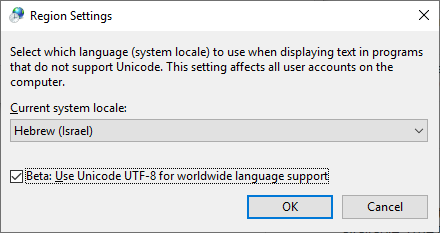










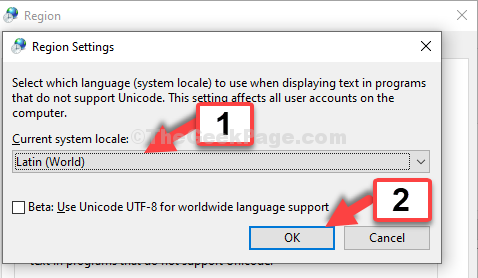

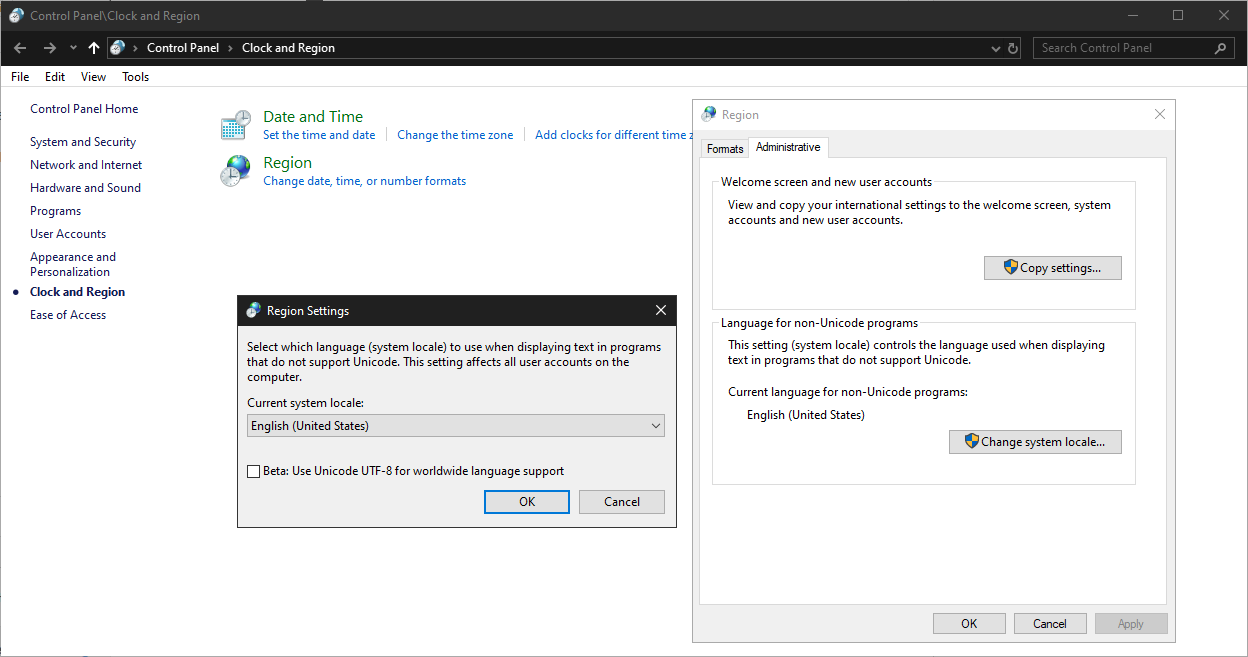

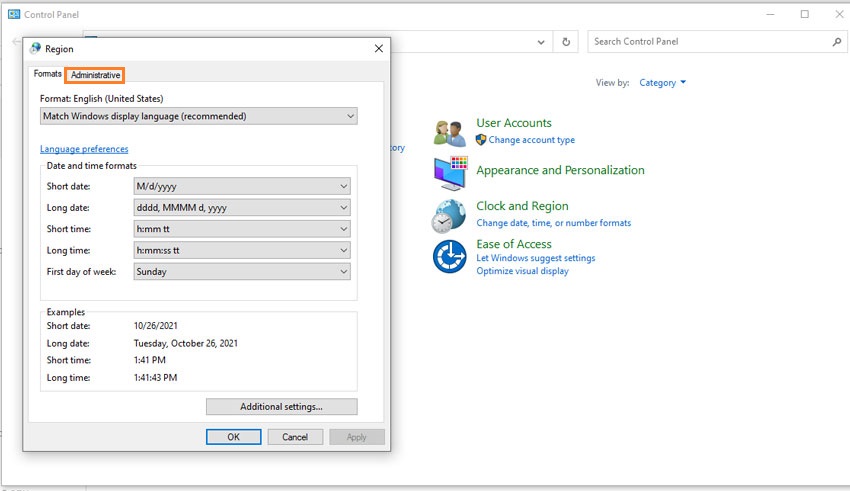




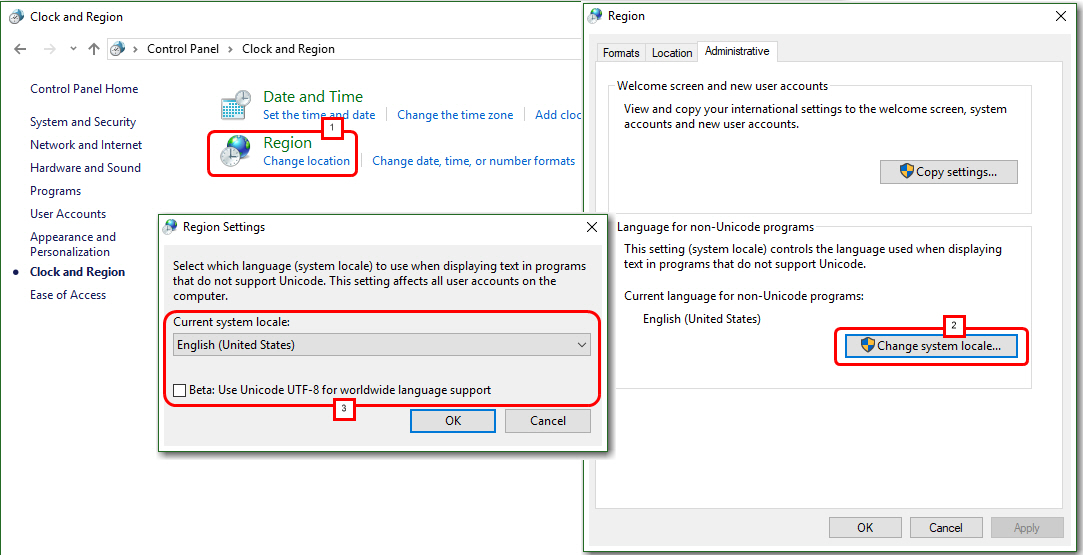
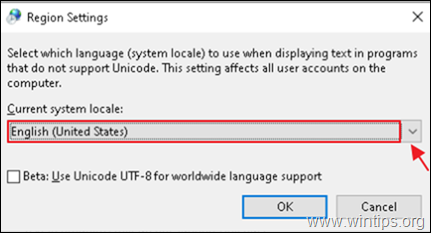




Article link: use unicode utf-8 for worldwide language support.
Learn more about the topic use unicode utf-8 for worldwide language support.
- What does “Beta: Use Unicode UTF-8 for worldwide language …
- Where can I find “Beta: Use Unicode UTF-8 for worldwide …
- Can I enable Unicode UTF-8 WorldWide Support in WIndows …
- Impact on Notes clients after enabling the Windows setting Beta
- “New regional setting” – what is that? (Win10 “Use Unicode …
- Use Unicode UTF-8 for worldwide language support” option …
- UTF-8 setting is not compatible – Febooti, Ltd.
- Use Unicode UTF-8 for worldwide language support” several…
- Bác nào rành về cái unicode UTF-8 của windown giúp em với.
- setting for “Beta: Use Unicode UTF-8 for worldwide language …
See more: https://nhanvietluanvan.com/luat-hoc